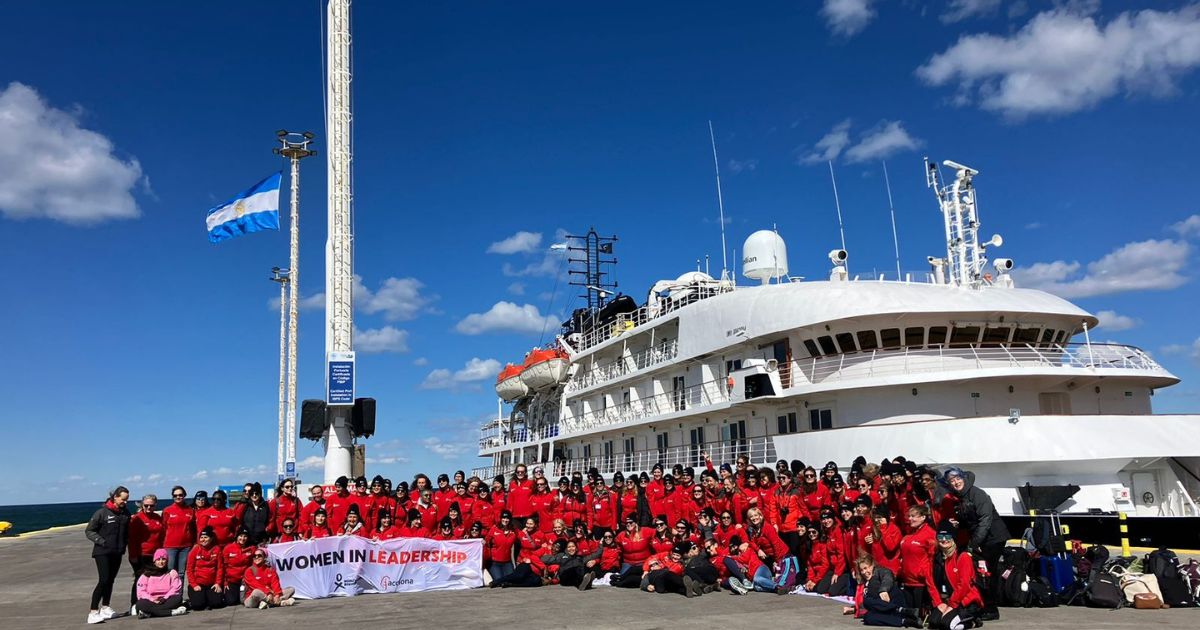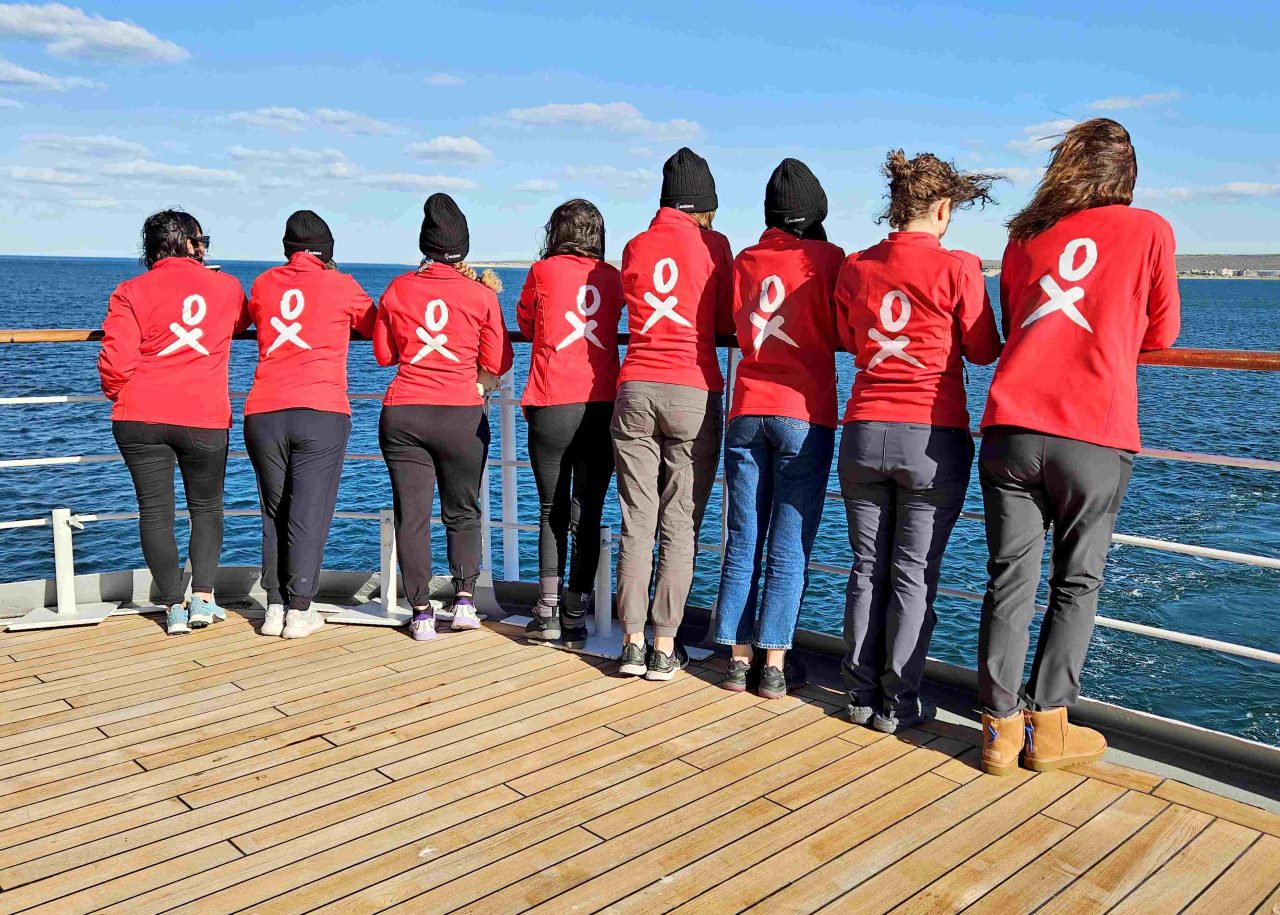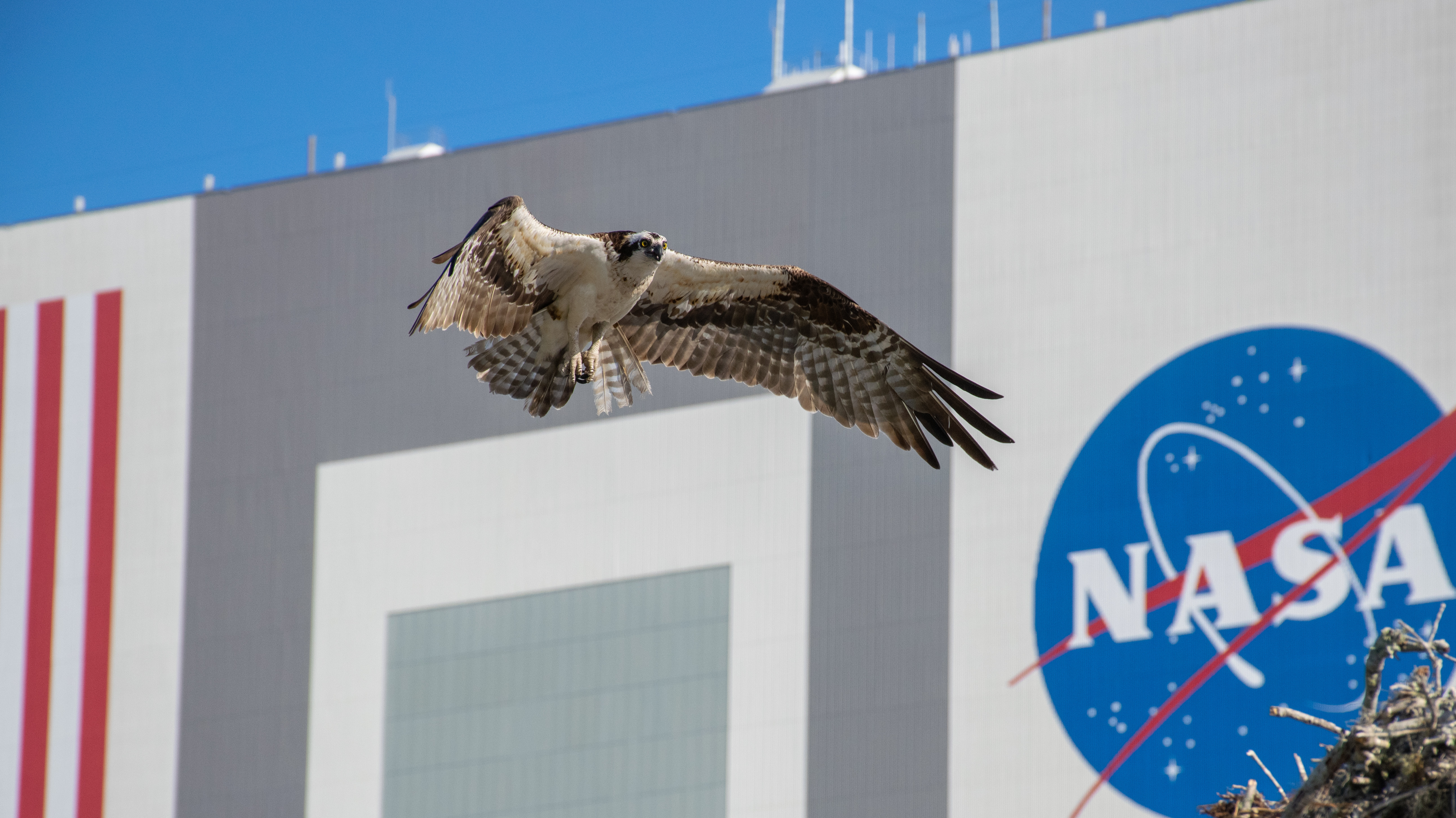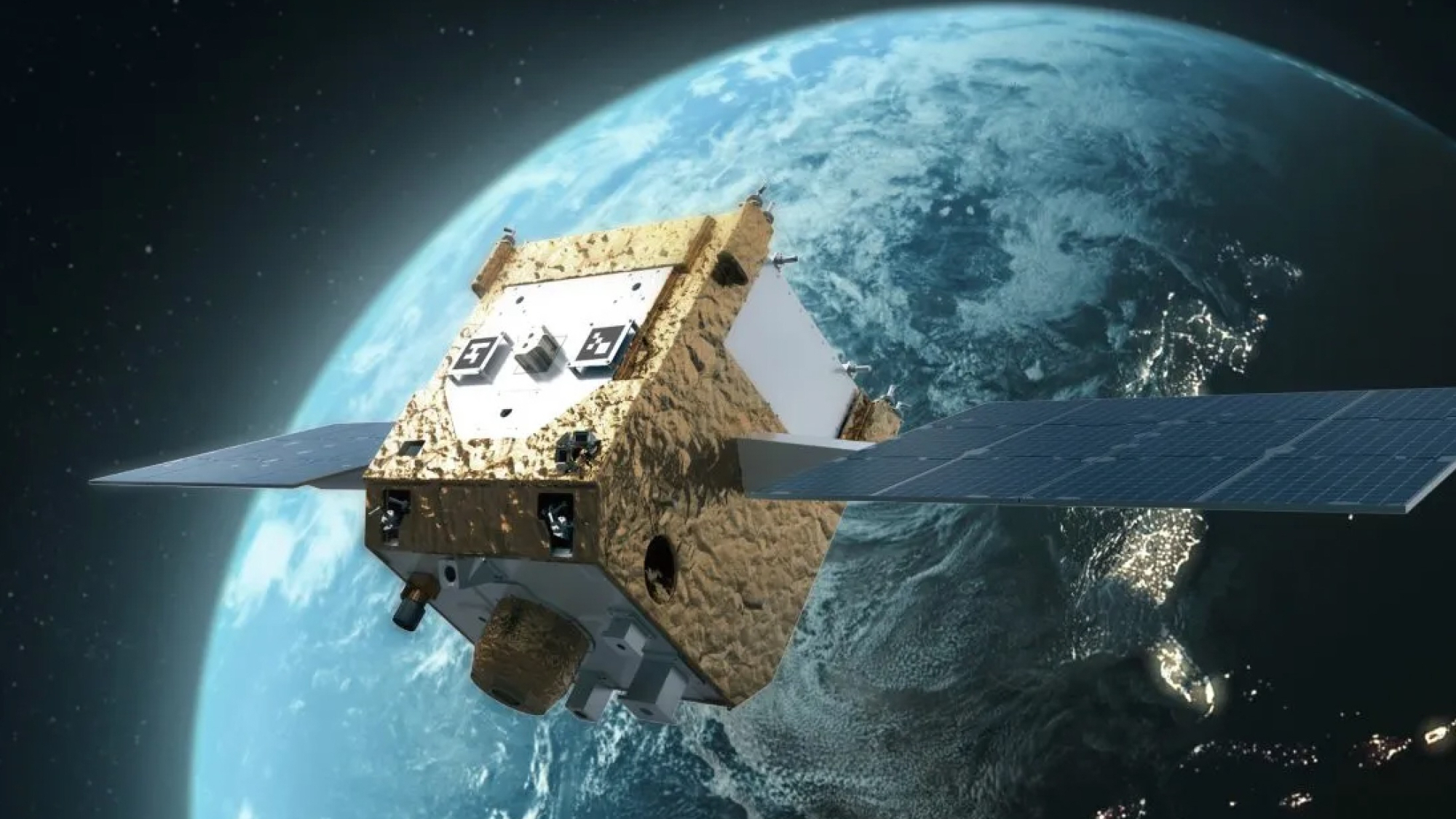Inside a historic trip to Antarctica, crewed by over 100 women scientists
"The sustainability of our planet is in crisis and so is the state of leadership in our world."

Since 2007, Michaela Musilová has dreamt of visiting Antarctica.
As an astrobiologist, she has two goals: To identify the limits of life on Earth and to assess the possibility that life as we know it exists elsewhere in the universe. Researching how life behaves in the extreme environment of Antarctica is key for her work; microbes that manage to survive the frozen environment at the end of our world could teach us a lot about their potential beyond Earth, too. Over the years, Musilová has tried a dozen times to set sail to the southernmost continent, but it never worked out.
It wasn't because her mission proposals were lacking, she says.
"Unfortunately, most of the time it was because an older male colleague or professor didn't want to let me go or took my place," she recalled in an interview with Space.com.
Women have worked in Antarctica only since the late 1970s, prior to which they were officially banned by countries that organized research programs on the continent. Apparently, "the rigors of the continent were too great for the women and the rigors of providing separate bathroom facilities were too great for the program administrators." On her 12th attempt, the analog astronaut and former director of the Hawaii Space Exploration Analog and Simulation (HI-SEAS) habitat is now onboard a cruise ship on her way to Antarctica at last, with over 100 women in science, technology, engineering and mathematics fields.
Related: Satellites reveal catastrophic year for emperor penguins amid climate crisis in Antarctica
Seventeen years - I have been trying to get to Antarctica for 17 years now and it's finally happening! Fingers crossed that it'll work out 😊🤞. pic.twitter.com/BpAlHEni2nNovember 13, 2023
During the voyage and while on Antarctic ice, this trip is designed to encourage each of these women on a journey toward becoming empowered scientists, in an environment where they feel safe and heard.
Get the Space.com Newsletter
Breaking space news, the latest updates on rocket launches, skywatching events and more!
"I really like the idea of having this global network of women to work with, to help each other, to inspire each other," said Musilová, adding that working on her leadership skills also inspires her to create platforms for women and girls to get involved in STEMM fields.
"Together, we have a support network and training related to lot of the usual challenges women have to deal with in general, but also particularly in STEMM fields," she continued, "whether it is discrimination, harassment, bias — all those very negative things — to fitting in, being able to have a family and still maintain a career, which is something usually women have to face more than men."
Leaders in astronomy tackling climate change
The voyage now underway has gathered early-, mid- and senior-career women climate researchers, medical doctors, ecologists, civil engineers as well as a handful of astronomers. The passengers, hailing from at least 18 nationalities, are connected by a mutual interest in sustainability and climate action for a rapidly changing Earth.
"The sustainability of our planet is in crisis and so is the state of leadership in our world," notes the website of the Australia-based Homeward Bound, a non-profit organization which has led all-women Antarctic expeditions like this one since 2016. "It’s not that men can’t or won’t do this. Rather that, when time is short, it may be that the balance of men and women on leadership teams will serve us all."
As of late last year, women comprised only 20 percent of astronomers around the world. If current hiring practices remain unchanged, it would take another 60 years for the women workforce in astronomy to rise to 30 percent, researchers previously found.
"More than 50 percent of women in technology roles leave the industry before they turn 35," Homeward Bound CEO Pamela Sutton-Legaud said in a statement. "We exist to enable more women within this sector, by helping them harness the tools they need to excel in their industries — particularly in the fight for the sustainability of our planet."
To drive home the need for sustainability, regions of Antarctica rapidly warming due to human-driven activities were chosen to serve as fragile backdrops during the voyage. These are areas that have seen record-low sea ice levels and an alarming loss of penguins, among other worrying trends, due to the crisis.
"I will be much more wearing a citizen hat than an astronomer hat," Anna Frebel, a physics professor at MIT who's also on the ship, told Space.com. "Obviously, it will be all beautiful, but the scientist's eye will also pretty quickly reveal what we're not seeing, which is not enough ice and not enough live penguins."
By 2036, the program aims to build a network of 10,000 women scientists in leadership positions around the world poised to help address climate issues.
"Most of us feel very strongly about what is going on in the world and how our environment is changing and how us humans are impacting it," Musilová said. "Going to Antarctica and seeing it for ourselves is going to be very transformational."
As part of the program, Musilová and the others completed a preliminary assessment of their leadership qualities and are carrying these results on the trip. Building off of those results, the group will undergo workshops, lectures and networking sessions to further enhance their leadership skills, focusing especially on tenets like empathy and inclusivity. This way, the program emphasizes "a lot of values that unfortunately aren't as popular as they should be in work environments, including the space industry," Musilová said.
"It's still an industry mostly dominated by males."
Over the next three weeks, the group will cross the Drake passage, a colossal, notably choppy body of water prone to 12-meter waves. The scientists will then set foot on — weather permitting — the remote Falkland Islands and sub-Antarctic island of South Georgia before cruising around the Antarctic peninsula on their way back to the drop off location in Ushuaia, Argentina.
"We will make a lot of friends for life, possibly hold each other's hair when we puke because we're so seasick," said Frebel.

During this self-funded trip, the group will be cut off from the rest of the world with only sporadic internet access. "Our day jobs and our families and all these things that we care about — but that eat up our mental bandwidth — can't access us," another passenger, Tiffany Vora of Explore Mars, a non-profit corporation based in Massachusetts, told Space.com.
Vora plans to bring the leadership skills she learns from the trip back home, continuing to advocate for women leadership in the space industry long after her Antarctic escapade. Another one of her key goals, she said, is to demonstrate that there is no fundamental conflict between improving life on Earth and extending human civilization beyond our planet: "We don't have to make a choice between Earth and space if we make the right kind of choices starting today."
In addition to the trip's leadership skill-building agenda, participants look forward to having some fun during the trip, including taking a "cold plunge" into the Antarctic sea, building some arts & crafts projects, even dressing up for a costume party.
"I'm still deciding on my outfit — my top three options are dressing as Barbie, a disco ball, or Ernest Shackleton," Isobel Romero-Shaw of University of Cambridge in the U.K. told Space.com prior to the voyage.
Creating impact
While the trip overall aims to inspire leadership for a sustainable, climate-friendly future on Earth, Vora and few other astronomers see definite parallels to space exploration.
"In my mind, space is fundamentally a sustainability problem," she said. "You're working on the edge of what's possible. Not everybody is on board with you. How do you lead in those times?"
She hopes to spark conversations among participants on the ship whose expertise lies outside astronomy on how they can contribute to the space industry, and ultimately form a long-term support network.
"To me, it maps beautifully onto what we need to do for thinking decades into the future where humans make their home off Earth," Vora added, "like learning to work in resource-constrained settings in the face of polarity, confusion and discomfort."
"To create any significant impact, we need a broad collaboration and a very big network," passenger Mariya Lyubenova, an astronomer and editor of European Southern Observatory's quarterly journal, The Messenger, told Space.com. Lyubenova plans on applying her leadership skills to advocating for dark sky preservation, for which collaboration among nations is crucial, she added.

Scientists are known to have well-trained, highly logical brains, and though this can help them approach problems in systematic ways, strategic planning alone doesn't translate theoretical solutions into impactful actions. So, astronomers on the ship are also hoping to learn soft skills through the program's teamwork assignments.
"We need to learn certain transferable skills," Debatri Chattopadhyay, a research associate at Cardiff University in the U.K. and a passenger on the ship, told Space.com. "We know physics, of course, but physics is not going to teach us how to handle people."
Others on the all-women trip view the journey as a "giant focus group."
"We keep each other honest but also focused on what our goals are and how to get there," said Frebel. "At the end of the day, we all agree that we want to do something for the planet."
The diverse background of the group would play an important role in having tough conversations about leadership, as the trip uproots them from their daily echo chambers and forces them to look critically at creative solutions to climate issues.
Frebel will be carrying paintings by a local artist featuring different types of penguins, a whale, a krill and a seal. She plans to photograph them placed in the Antarctic snow and display those pictures at a future exhibition back home in Massachusetts.
"Climate change is real and if we want to keep seeing penguins, we better do something."
Join our Space Forums to keep talking space on the latest missions, night sky and more! And if you have a news tip, correction or comment, let us know at: community@space.com.

Sharmila Kuthunur is a Seattle-based science journalist focusing on astronomy and space exploration. Her work has also appeared in Scientific American, Astronomy and Live Science, among other publications. She has earned a master's degree in journalism from Northeastern University in Boston. Follow her on BlueSky @skuthunur.bsky.social
-
Classical Motion Right before 2000, my company called a field personal meeting. The company wanted to make a government bid, to install remote sensors at 8 sites there. The work would have taken about 60 days. But the commuter service only had six month runs. So after the work was completed, someone had to sit there for 4 months.....before coming home.Reply
Not one engineer wanted anything to do with it. Except me. But I didn't let on......and was promised a healthy bonus, plus, my boss said he would purchase any ham equipment I wanted.....to pass the time away. So, I accepted and the company made it's bids. And I was excited and looking forward to it.
But, we lost the bid, and I did not get to go, and I did not get a bonus or new ham equipment. And the experience of Antarctica. I would have liked it on my resume.
I wonder if the six month commute is still in force. Maybe now they have year round travel. -
aristophanes >a non-profit organization which has led all-women Antarctic expeditions like this one since 2016Reply
Any accomplishments so far?









